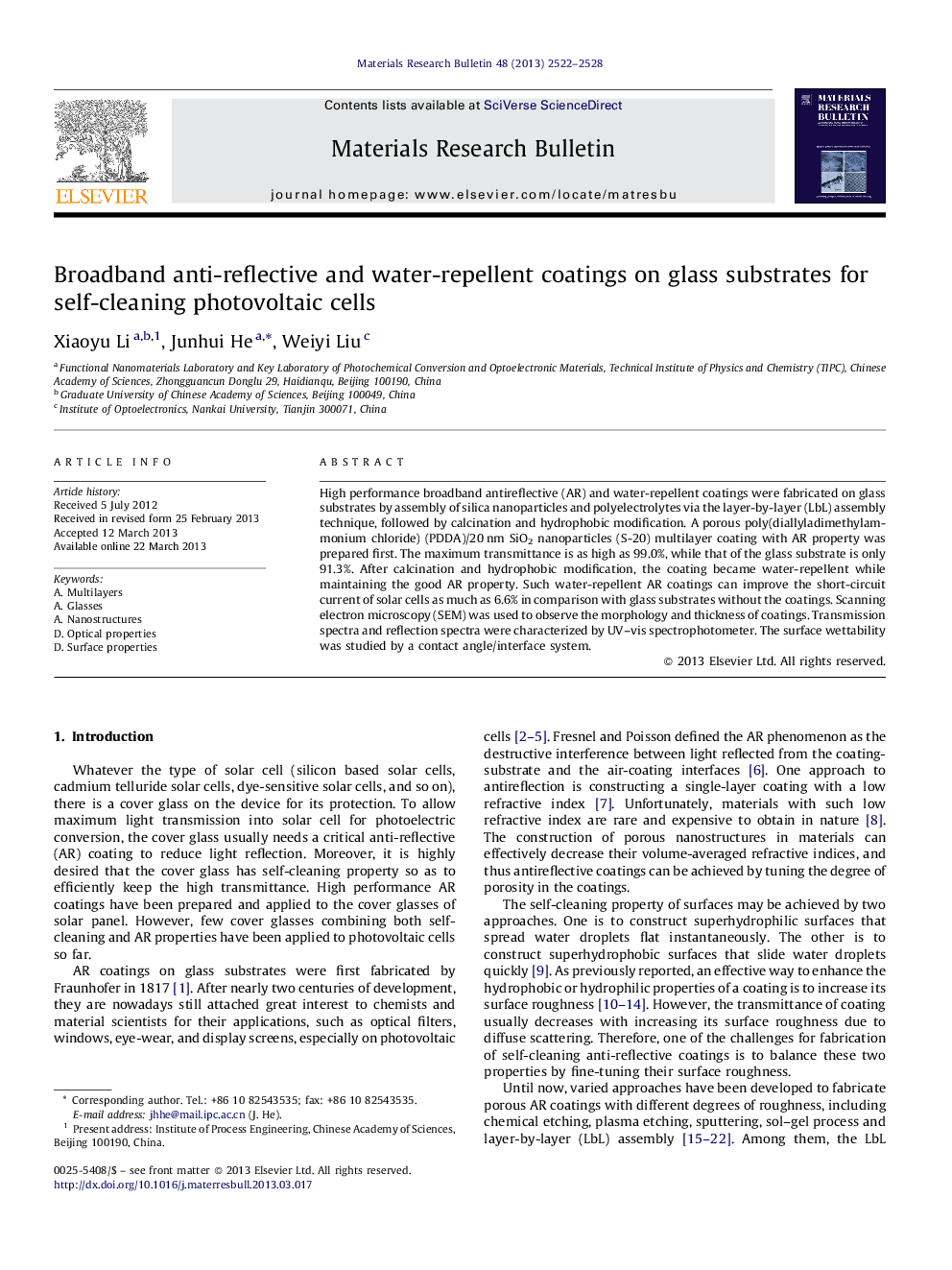| Article ID | Journal | Published Year | Pages | File Type |
|---|---|---|---|---|
| 1488767 | Materials Research Bulletin | 2013 | 7 Pages |
•Broadband anti-reflective and water-repellent coatings were fabricated.•Transmittance increased to 99.0%, significantly higher than that of commercial solar glasses.•The performance of standard solar cells with the AR coating was enhanced as much as 6.6%.
High performance broadband antireflective (AR) and water-repellent coatings were fabricated on glass substrates by assembly of silica nanoparticles and polyelectrolytes via the layer-by-layer (LbL) assembly technique, followed by calcination and hydrophobic modification. A porous poly(diallyladimethylammonium chloride) (PDDA)/20 nm SiO2 nanoparticles (S-20) multilayer coating with AR property was prepared first. The maximum transmittance is as high as 99.0%, while that of the glass substrate is only 91.3%. After calcination and hydrophobic modification, the coating became water-repellent while maintaining the good AR property. Such water-repellent AR coatings can improve the short-circuit current of solar cells as much as 6.6% in comparison with glass substrates without the coatings. Scanning electron microscopy (SEM) was used to observe the morphology and thickness of coatings. Transmission spectra and reflection spectra were characterized by UV–vis spectrophotometer. The surface wettability was studied by a contact angle/interface system.
Graphical abstractHigh performance broadband antireflective and water-repellent coatings were fabricated on glass substrates, which can improve the short-circuit current of solar cells as much as 6.6% in comparison with glass substrates without the coatings.Figure optionsDownload full-size imageDownload as PowerPoint slide
